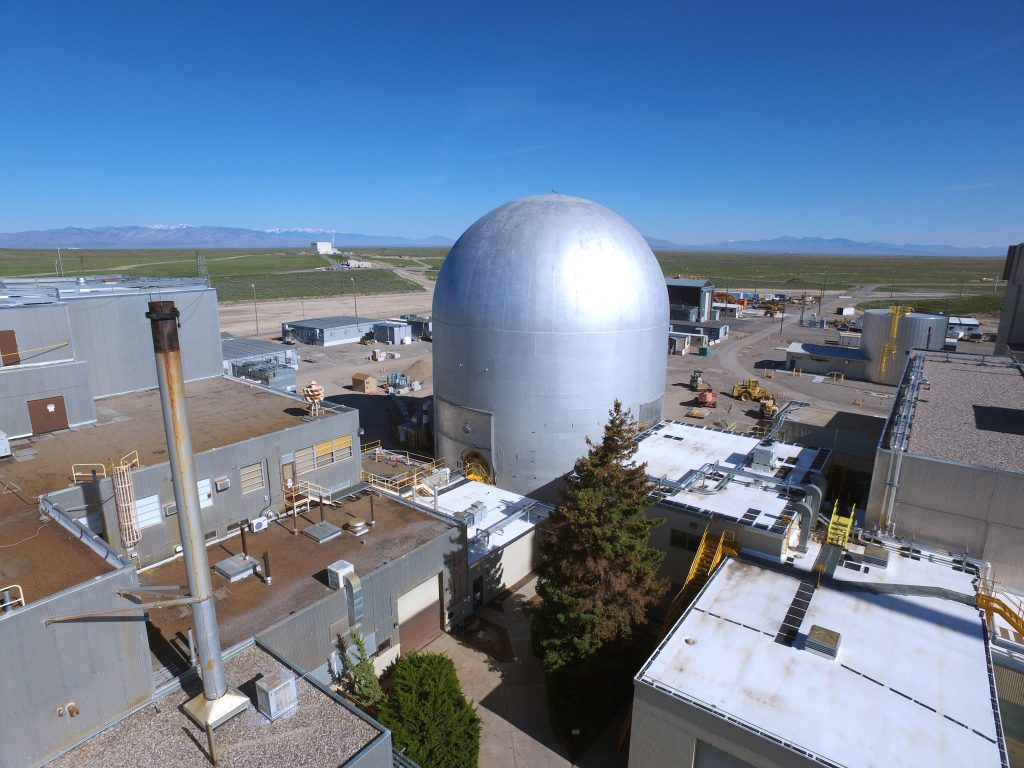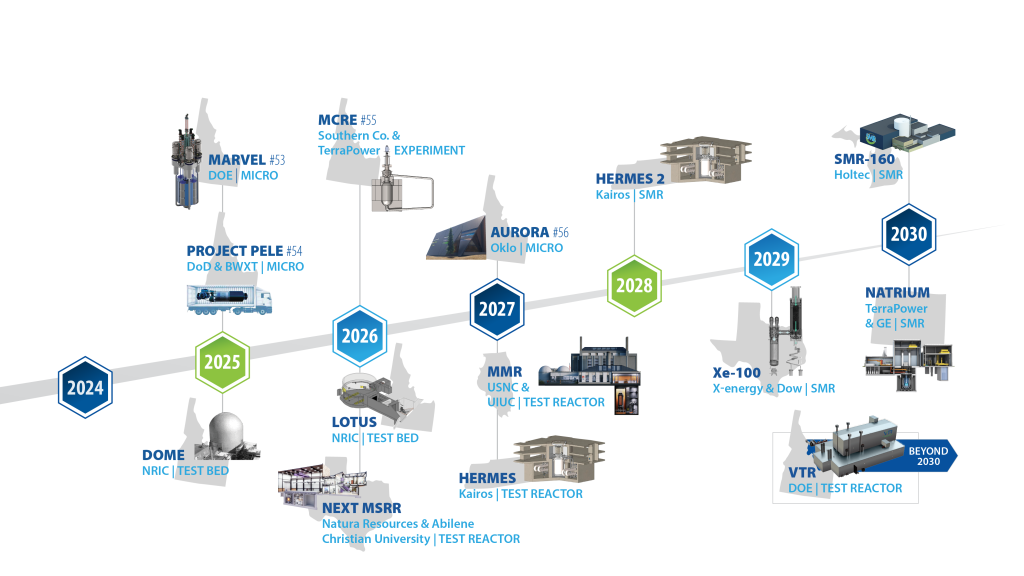A new generation of nuclear reactors is poised to set the United States—and the world—on the path to net zero
John Wagner is the director of Idaho National Laboratory, the US Department of Energy’s center for nuclear-energy research and development. This essay is part of the Global Energy Agenda.
Nearly seventy-five years ago, the US Atomic Energy Commission set out to prove that nuclear power could be harnessed to produce electricity for peaceful applications. To do so, it created the National Reactor Testing Station in Idaho. The station, now known as Idaho National Laboratory (INL), fulfilled the commission’s promise. With public and private sector partners, the initiative achieved many firsts, including the first nuclear electricity, the first city powered by nuclear, the first demonstration of the principle of breeding (producing more fuel than is consumed in a reactor), the first submarine reactor, and the first mobile nuclear power plant. Fifty-two unique test reactors were designed, built, and operated, giving birth to the US Nuclear Navy and the global, commercial nuclear energy industry. This rich legacy of achievement has made the world safer, cleaner, more prosperous, secure, and resilient.
And yet, it might surprise some to learn that although there are four remaining test reactors operating at INL, the US Department of Energy’s laboratory for nuclear energy research and development, it has been fifty years since a new, unique reactor began operations on the site. That’s about to change.
Over the next decade, more than a dozen advanced reactor concepts will be demonstrated in the United States, including microreactors, small modular reactors, and university test reactors.
Ten years ago, this timeline would have been unthinkable. What has changed is a growing awareness about climate change and the imperative to combat its devastating impacts by producing clean, secure, flexible, and resilient energy.
This requires more nuclear energy—a lot more. Earlier this year, a DOE “Liftoff” report identified the potential for nuclear to scale to 300 gigawatts (GW) by 2050 to address the broader need in the United States for approximately 550–770 GW of additional clean, firm capacity to reach net-zero emissions.

Over the next decade, more than a dozen advanced reactor concepts will be demonstrated in the United States, including microreactors, small modular reactors, and university test reactors.
This is consistent with what the US-based Nuclear Energy Institute (NEI) found when it polled member utilities. NEI utilities see a role for nearly 100 GW of new nuclear electricity by 2050 to support their decarbonization goals—more than double the current US nuclear electricity capacity. Analyses from the Intergovernmental Panel on Climate Change points toward the need to materially increase global nuclear capacity by 2050.
This represents a profound challenge, but also an opportunity for nuclear power to address the global need for clean, firm, secure, and flexible energy in the next few decades.
INL’s strategy—coordinated with numerous partners—is to start small. This means making systems that are simple and inexpensive as compared to current generation power reactors. To do this and to enable the successful scale-up in size, complexity, and capacity of nuclear power, the United States needs to do the following: build supply chains for advanced nuclear technologies, including a domestic supply of fuel; develop a knowledgeable and capable workforce; and revamp its regulatory system to enable timely deployment of advanced technologies.
At INL, that strategy (see figure below) begins with MARVEL, an 85-kilowatt thermal DOE test reactor that will provide a research-and-development platform for researchers and industry to understand the use of microreactors for a wide variety of potential applications, while providing information to support licensing, environmental assessments, improved performance, and deployment. MARVEL will also advance US capabilities to support subsequent reactor projects.

Next up will be Project Pele, a partnership between DOE, INL, the US Department of Defense, and BWXT that will help US armed forces reduce their dependence on diesel fuel. Pele will pave the way for small, advanced reactors for other military applications, as well as private sector applications.
Following Pele, INL, working with Southern Company and TerraPower, will conduct the Molten Chloride Reactor Experiment (MCRE), which will be the world’s first fast-spectrum salt system to achieve criticality—meaning it will be able to sustain a fission chain reaction. Additionally, the Oklo Aurora microreactor could be demonstrated on the INL site as early as 2027.
A key aspect of INL’s strategy is to use decommissioned reactor facilities as test beds, via the National Reactor Innovation Center. The decommissioned Experimental Breeder Reactor-II, which is being repurposed for Demonstration and Operation of Microreactor Experiments (DOME), is scheduled to be completed by 2025. Another test bed, LOTUS, which will host MCRE, is scheduled to be operational by 2027. These test beds will streamline testing of advanced reactor technologies, strengthening the relationship between the national labs and the private sector, and supporting the ultimate objective of deploying advanced reactors into the global market.
As shown in the figure, many reactor projects are planned to follow, demonstrating technologies for a variety of applications. These include the TerraPower Natrium reactor in Wyoming, which will repower a coal generation site and the X-Energy reactor in Texas, which will support decarbonization of the energy-intensive industrial sector. Note that the figure is not all-inclusive, as the situation is dynamic and numerous additional reactor demonstration projects in the United States and beyond are working toward demonstration.
Over seven decades, the nation has made incredible progress advancing nuclear energy to its current state. It’s time to take the next step. With the combined efforts of government, industry, and academic partners, it’s time for the United States to honor its rich legacy of achievement by providing the research foundation to deploy the advanced nuclear technologies the world desperately needs to power a clean and prosperous future.
At INL, we approach each day as though the world depends on our success. Failure is not an option. Not this time. Not if we want to offer our children, grandchildren, and future generations their best opportunity for security, prosperity, and environmental sustainability.
All essays
Related program

The Global Energy Center develops and promotes pragmatic and nonpartisan policy solutions designed to advance global energy security, enhance economic opportunity, and accelerate pathways to net-zero emissions.
Image: The decommissioned Experimental Breeder Reactor-II, which is being repurposed for Demonstration and Operation of Microreactor Experiments (DOME), is scheduled to be completed by 2025. | Idaho National Laboratory
